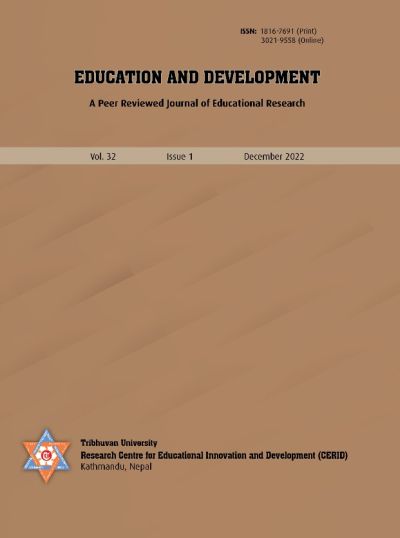Association of Mother's Education with Maternity and Newborn Care Practices in Nepal
DOI:
https://doi.org/10.3126/ed.v32i1.61557Keywords:
association, maternity care, mother's education, newborn care, practicesAbstract
Mother’s education plays a crucial role for enhancing maternal and child health. This paper aims to examine the association of mother's education with maternity and newborn care practices in Nepal. It builds primarily on secondary data obtained the Nepal Demographic and Health Survey 2016. In this study, it was found that 22.4 percent of mothers with no education made four or more antenatal care visits, which increased to 31.2 percent among those who had completed SLC or higher levels of education. In terms of place of delivery, more than 30 percent of the mothers who completed SLC or higher education chose to had their babies in health facilities. Likewise, over 30 percent of mothers who having SLC or higher education ensured their own and their newborns' health was assessed by healthcare professionals after delivery. Mother's education plays a significant (p<0.05) role in increasing antenatal visits, motivating women to have deliveries with health facilities, giving preference to health checkups of mothers and newborns before and after delivery, and preferring health checkups of the mothers and the newborns by health personnel, which eventually improved maternal and newborn health. The main finding of this study is that increasing levels of mother's education have a significant positive association with maternity and newborn care practices in Nepal. Therefore, it is strongly recommended that the nation invest in women's education up to a higher level to improve the health status of both mothers and children.
Downloads
Downloads
Published
How to Cite
Issue
Section
License
Copyright (c) 2022 The Author(s)

This work is licensed under a Creative Commons Attribution-NonCommercial 4.0 International License.
CC BY-NC 4.0. This license requires that reusers give credit to the creator. It allows reusers to distribute, remix, adapt, and build upon the material in any medium or format, for noncommercial purposes only.




